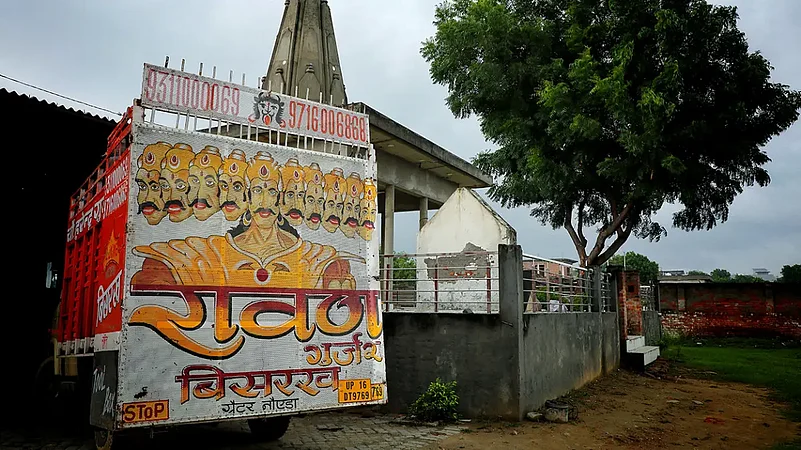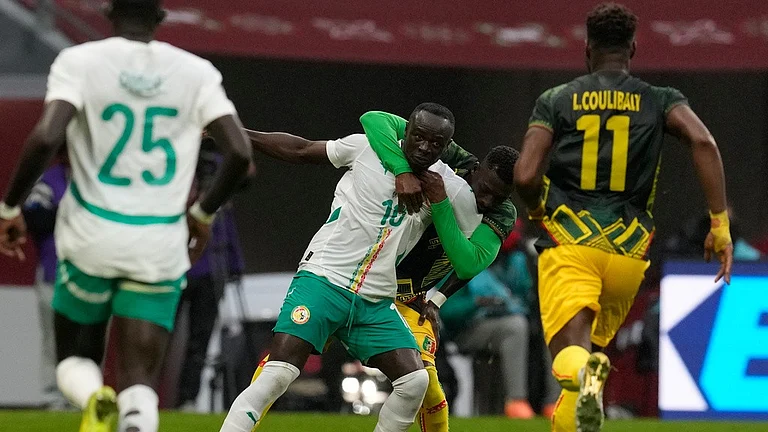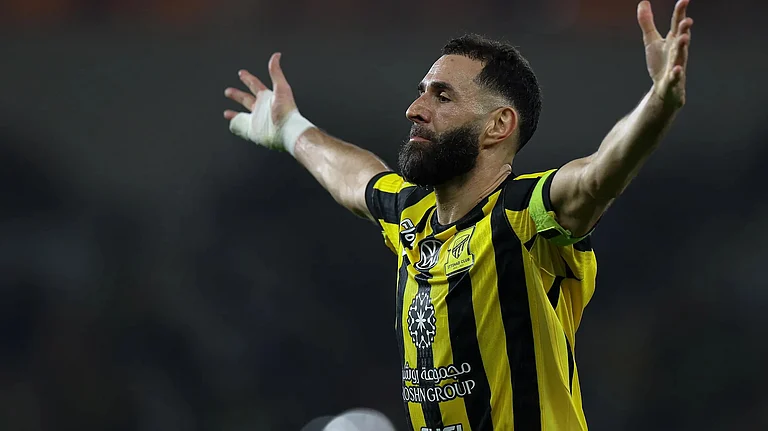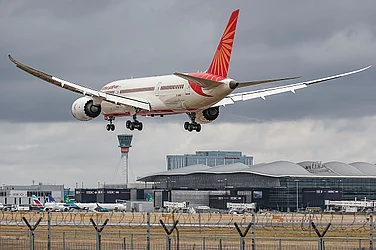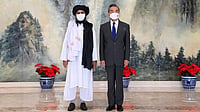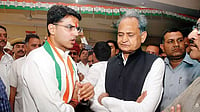About 33 km east of New Delhi is the village of Bisrakh in Gautam Budh Nagar district of Uttar Pradesh. With a population of about 5,500, according to the 2011 Census, it is no different from most villages in the region—except that its residents worship Ravan.
The demon king of Lanka is the arch-rival of Ram, the Hindu god and hero of the ancient Sanskrit epic Ramayana. In its story, Ravan abducts Ram’s wife, the goddess Sita, prompting Ram to assemble an army of monkeys and attack his kingdom.
The victory of Ram over Ravan is celebrated in most parts of India during the festival of Navratri. This year, the 10-day festival will be celebrated from September 26 to October 5.
In Bisrakh, though, the nine festival days are not a period of celebration. While effigies of Ravan are burnt all over the country on the 10th day, Dussehra, Bisrakh residents refuse to do so.
“How can we burn the effigy of our ancestor?” says Pankaj, 45, a resident of the village. “That would be demeaning.”
Its residents also believe that the village gets its name from Vishravas, Ravana’s father and a famous sage.
Local hero
The reverence that residents have for Ravan is evident from the moment one enters the village. His name can be seen in dozens of shops. At Ravana DJ, you can hire music equipment for festivals and celebrations. Men working in fields or chatting in front of shops wear shirts with the illustration of the ten-headed demon king. It is also common on car and truck windowpanes and bumper stickers.
In the heart of the village is a temple dedicated to the Hindu god Shiva. It is called the Bisrakh Ravana Mandir. Villagers believe that Ravana and his ancestors had worshipped here. Besides a Shivling, there are statues of other gods, goddesses and saints.

“The Shivling we worship here was established by Ravana’s grandfather Pulastya,” says Vinay Bhardwaj, the head priest of the temple. “Pulastya’s son Vishravas and his grandsons Ravan and Kumbhakaran, have worshipped Shiva here.”
“Ravan acquired miraculous powers after years of worship that helped him oust his brother Kuber and ascend the throne of Lanka,” he adds.
Urban studies scholar Vandana Vasudevan, in her book Urban Villager: Life in an Indian Satellite Town (2013), claims that the octagonal Shivling was unearthed from a forest nearby and placed in the temple. There are several temples dedicated to other deities in the village, many of which are more than a hundred years old.
In 2014, the media reported that the villagers were planning to raise a temple dedicated to Ravan and were seeking Rs 2 crore from the Greater Noida Authority to complete it. However, Bajrang Dal, the youth wing of the Vishva Hindu Parishad, opposed the move. Two years later, when the yoga guru, Ashokanand, reportedly installed a statue of Ravan at his ashram in the village, it was vandalised overnight.
Several villagers accused the Bajrang Dal of the act, but none could provide an answer as to why Ravan’s worship would be opposed by the unit. No one from the Bajrang Dal was available for comment.
Strange occurrences
Unlike most Indian towns and villages, Bisrakh does not celebrate Dussehra. But it is not only out of reverence for the villagers’ mythological ancestors—they also believe that celebrating the festival would bring the wrath of Ravan upon them.
ALSO READ: Lesson On Environment From Ramayan
There are many stories in the village about strange occurrences around Navratri in the past—though there are no eyewitnesses to these. “Once, a family had burnt an effigy of Ravan on Dussehra,” says Dhansingh Bhatti, 50, a resident of Bisrakh. “Two members of the family died the next day.”
While other villagers have also heard this tale, no one could confirm which family had suffered the misfortune. “We have heard it from our elders” was the common refrain. Bhatti says the village has not even held a Ram Leela—a traditional theatrical depiction of episodes from the Ramayana held during Navratri—in the past 30 years.
Bhir Singh, a villager in his mid-60s, corroborates Bhatti, but claims thetime since which the village last saw a Ram Leela is over five decades.
“All the villagers who have hosted, organised or taken part in any Ram Leela, have had a death in their families immediately afterwards,” says Singh. “Although we respect and worship Ram and he is our God, we believe Ram Leela is inauspicious for the village.”
“Those families, my father had told me, lost everything—loved ones, businesses, happiness, and peace.”
Ram and Ravan
At the Ravana Mandir in the village, head priest Bhardwaj has overseen the rituals for the past 16 years. He says that villagers worship all Hindu gods and goddesses here.
“We will install statues of Ram, Sita and Lakshman in the temple after Dussehra in October this year,” he says, showing idols covered with a white cloth in the premises of the temple. “The villagers want to get them installed.”
In the epic, at the climax of the battle between Ram and Ravan’s armies, the former kills the latter by shooting him with an arrow. This is often considered a victory of good over evil.
ALSO READ: In The Land Of Asurs Where God Is Formless
But villagers have a different interpretation of the events. “Ram did not kill Ravan. Rather, he set the demon king free,” says Bhir Singh. “He freed Ravan from this world and sent him to heaven.”
Freedom from the cycle of birth and the attainment of moksha is one of the key tenets of Indian religions like Hinduism, Buddhism and Jainism. “We respect Ram because he is our Lord, and we worship Ravan because he is our ancestor,” says Singh.
(This appeared in the print edition as "Ravan in Ram’s World")






